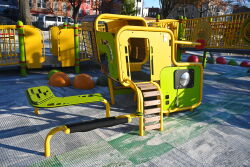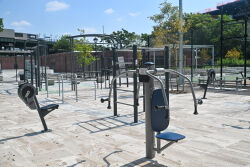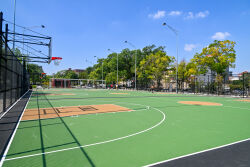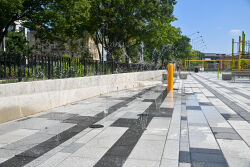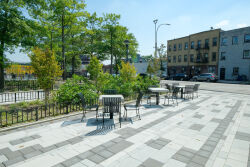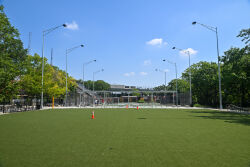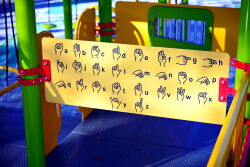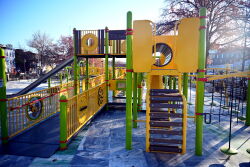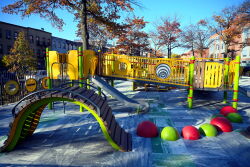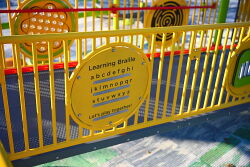Callahan-Kelly Playground
Callahan-Kelly Park
What was here before?
Callahan-Kelly Park lies at the northern edge of the neighborhood of Brownsville, named for real estate speculators Charles S. and Harietta C. Brown, who began buying land in 1865 and eventually built 250 cottages there. First known as Brown’s Village, the initial settlement of homes and shops was a remote area surrounded only by dairy farms and meadows.
The opening of the Fulton Street elevated railway in 1889 and completion of the Williamsburg Bridge in 1903 improved transportation and simplified commuting from Brooklyn to Manhattan. Brown’s Village grew, and by the late 19th century it had come to be known as Brownsville. New York City developer Aaron Kaplan built dozens of tenements here to provide housing for garment workers in Manhattan’s Lower East Side. By 1926 Brownsville had become known as the “Jerusalem of America.” many of the population having escaped persecution in Poland and Russia.
Brick tenements once stood on the park site, and a street, known as Brooklyn & Jamaica Plank Road (later Norman Place), used to run through what is now the baseball field. The neighborhood dramatically changed when a major rail hub opened blocks away in the early 20th century.
How did this site become a playground?
Eventually, the city acquired the title for this land in 1938. It was named after local World War I soldiers in 1939, and in 1945, the title to the land was transferred to NYC Parks with some portions set aside for sewers, subways, and railroads. A subway vent still stands in the park today.
The playground was rebuilt in 2022 with new play equipment, spray shower, basketball courts, and adult fitness equipment. In addition, the project constructed a new skate park and park entrances.
Who is this playground named for?
William E. Callahan and Edward E. Kelly were local soldiers who died during World War I. Callahan’s younger brother Thomas worked to keep their memory alive by organizing a local American Legion post, the Callahan-Kelly Post, and 25 years later this playground was named in their honor.
Callahan, who lived nearby at 98 Hinsdale Street, was a Corporal in Company L of the 305th Infantry and was killed in action at the Battle of the Argonne on October 2, 1918. Kelly, who also lived only blocks away at 1330 Herkimer Street, was a Private in Company G of the 23rd Infantry, and later the 106th Infantry, and was killed in action at the Battle of Dickie Bush Farm on September 2, 1918. Kelly and Callahan were among more than 116,000 American men killed in World War I.
Check out your park's Vital Signs
Clean & Safe
Green & Resilient
Empowered & Engaged Users
Share your feedback or learn more about how this park is part of a
Vital Park System

